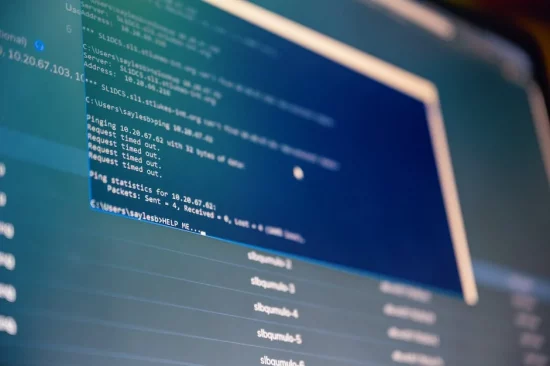Introduction to data analysis in law enforcement
Data analysis plays a crucial role in law enforcement. It helps officers identify patterns and trends in criminal activity, allowing them to make more informed decisions and take proactive measures to prevent crime. By analyzing data, law enforcement can allocate resources more effectively and identify areas that require greater attention. Furthermore, data analysis can help improve the accuracy of investigations and strengthen the criminal justice system as a whole.

Why data analysis is crucial for law enforcement
Data analysis is essential for law enforcement to better understand and interpret large volumes of information. By using data analysis, law enforcement agencies can identify patterns, trends, and relationships within criminal activities. This allows them to make informed decisions and predictions to prevent and solve crimes effectively. Data analysis also helps law enforcement to allocate resources efficiently and improve overall operational effectiveness. It plays a crucial role in enhancing public safety and ensuring justice within communities.
Role of data in crime prevention and investigation
Data plays a crucial role in helping law enforcement prevent and investigate crimes. By analyzing data, law enforcement agencies can identify patterns and trends in criminal activity, which enables them to allocate resources effectively and target specific areas for crime prevention. Additionally, data analysis can provide insights into criminal behavior, helping law enforcement develop strategies to combat crime more effectively. Moreover, data is instrumental in aiding investigators in solving crimes by providing evidence, identifying suspects, and linking seemingly unrelated incidents. Data analysis is an essential tool for law enforcement in their mission to maintain public safety and uphold the law.
Tools and techniques for data analysis in law enforcement
Law enforcement utilizes various tools and techniques for data analysis, aiding in crime detection and prevention. Law enforcement agencies often employ software like Palantir, IBM i2 Analyst’s Notebook, and Tableau to analyze large volumes of data and identify patterns or trends. Techniques such as link analysis and geospatial analysis are also commonly used to visualize connections between individuals, organizations, and geographical locations. These tools and techniques enable law enforcement to make informed decisions and allocate resources effectively to maintain public safety.
Data-driven decision making in law enforcement
Data-driven decision making in law enforcement is crucial for improving public safety and reducing crime rates. By analyzing data related to criminal activity, law enforcement agencies can allocate resources more effectively, identify crime hotspots, and implement targeted strategies to prevent and combat criminal behavior. Using statistical analysis and predictive modeling, law enforcement officials can anticipate potential criminal activities and proactively deploy resources to address them. This approach not only enhances the efficiency of law enforcement operations but also promotes a more strategic and proactive approach to crime prevention.
Challenges and limitations of data analysis in law enforcement
Implementing data analysis in law enforcement is not without its challenges and limitations. Some of the difficulties include:
- Data Quality: Law enforcement agencies may encounter problems with the accuracy and reliability of the data they collect and analyze.
- Privacy Concerns: The use of personal data must be carefully managed to ensure compliance with privacy laws and protection of individuals’ rights.
- Resource Constraints: Limited funding and access to technology may hinder the implementation of robust data analysis systems in some law enforcement agencies.
- Predictive Accuracy: Although data analysis can help in crime prediction, there is still a risk of false positives or errors in identifying patterns and trends.
- Skepticism and Resistance: Some law enforcement personnel may be resistant to change or may question the validity and usefulness of data analysis methods.
Addressing these challenges and limitations is crucial for law enforcement agencies to make the most of data analysis in their efforts to enhance public safety and crime prevention.
Success stories and case studies
Data analysis has revolutionized law enforcement, leading to numerous success stories and case studies. For example, in the city of Santa Cruz, California, the police department utilized data analysis to identify areas with high crime rates and deployed resources effectively, resulting in a significant decrease in crime. In another case, the New York Police Department used data analysis to predict crime hotspots and prevent criminal activity before it occurred. These success stories demonstrate the crucial role data analysis plays in modern law enforcement, allowing for proactive and targeted crime prevention strategies.
Ethical considerations in data analysis for law enforcement
Ethical considerations are crucial when using data analysis in law enforcement. It’s important to ensure that the data collected and analyzed is done so in a way that respects the rights and privacy of individuals. Here are some key points to consider:
- Privacy and Consent: Always obtain consent and ensure that individuals’ privacy is protected when collecting and using data for analysis.
- Bias and Fairness: Pay attention to potential biases in the data and analysis methods to ensure fair and unbiased results.
- Transparency: Be transparent about the data collection and analysis processes to build trust with the community and ensure accountability.
- Accountability: Hold individuals and agencies accountable for the ethical use of data in law enforcement to maintain public trust.
Training and education for law enforcement personnel
While the type of data analysis can vary, law enforcement personnel typically receive training and education to enhance their skills in this area. This includes learning how to collect, analyze, and interpret data to aid in their investigations and decision-making. They are also educated on the importance of using data analysis to identify patterns, trends, and potential threats in order to better protect the community and uphold the law.
Conclusion and future of data analysis in law enforcement
As data analysis technology continues to advance, law enforcement agencies are increasingly relying on it to better understand and address criminal activity. The use of data analysis has proven to be effective in identifying trends, patterns, and anomalies in criminal behavior, which has greatly improved the ability of law enforcement to prevent and solve crimes. In the future, as technology continues to evolve, we can expect data analysis to play an even more prominent role in law enforcement, leading to more efficient and effective policing.




 520 838 0346
520 838 0346 sales@zinatt.com
sales@zinatt.com








